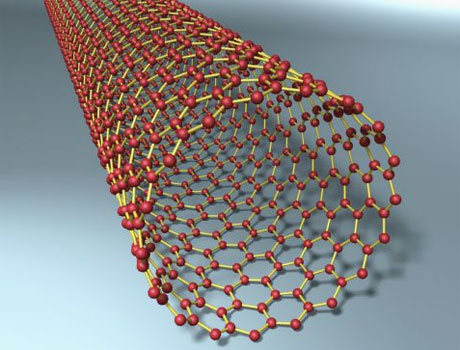|
By Ian MacArthur
Revolutions in one field of science often revolutionize other scientific fields. Breakthroughs in nuclear physics in the 1940’s later allowed organic chemistry to thrive with improved chemical detection methods and gave rise to biological imaging technologies. Recent developments in nanotechnology are now set to drastically enhance our understanding of biology and medicine. The lab of Dr. Michael Strano, professor of chemical engineering at MIT, is studying the use of carbon nanotubes as biological sensors. The team has devised a nanotube-based sensor that can function in living creatures for more than a year. Specifically, the sensor can be used to monitor physiological levels of nitric oxide (NO), an important molecule involved in intercellular communication. The development of the first long term nano-sensor is likely to shed unique insight into the role that NO plays in cell signaling, immune system function, and cancer. Carbon nanotubes are hollow, cylindrical structures with a diameter of one nanometer. They are naturally fluorescent, making them an ideal candidate for use as biological sensors. By wrapping the nanotubes in a molecule that is able to bind to the targeted chemical for detection, levels of the targeted chemical can be measured by how the fluorescence of the nanotube is affected by the degree of binding. In the case of nitric oxide, Dr. Strano’s lab discovered that wrapping a nanotube in DNA of a specific sequence would bind the nanotube to NO and alter fluorescence. The long term sensor was created by embedding carbon nanotubes in a gel polymer found in algae and placing it under the skin of mice. There, the sensor was able to successfully function for 400 straight days, a time-frame that the researchers believe can be extended. Now that the sensor has been demonstrated to be operable over a long period of time, Dr. Strano and his team are beginning to study how this technology can be used to detect blood glucose levels in people who suffer from diabetes. The commonest current method for diabetics to read their blood glucose levels is to prick their fingers multiple times a day. Although electrochemical sensors have been developed as an alternative to finger pricking, the best ones available today are only able to last a week and carry the risk of infection due to having to break skin to insert them. A carbon nanotube sensor like the one being developed in the Strano lab would eliminate both of these problems. But what are the broader implications of this early success in biological nanotechnology? Surely, this single advancement does not constitute a revolution in itself. However, as the sophistication of nanotechnology increases and its application to biological systems is enhanced, we may see a paradigm shift in the practice of medicine. The potential applications of nanotechnology in medicine are vast, from using nanosensors to detect pathogens in the bloodstream to using nano-sized machines to deliver drug payloads to specific cell receptors. Although nanotechnology is still a nascent field, the current exponential growth in information technologies means it may grow and advance rapidly. These advances, coupled with new developments in bioinformatics and personalized medicine, may revolutionize medical practice in the coming decades. While we patiently wait for the full potential of these technologies to be realized, we may still marvel in the elegant simplicity of the carbon nanotube sensor.
0 Comments
Leave a Reply. |
Categories
All
Archives
April 2024
|

